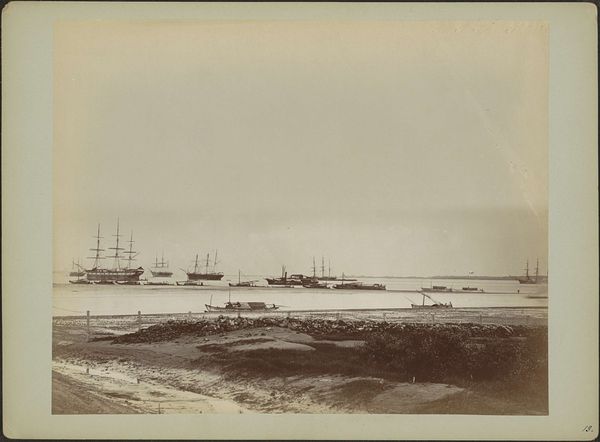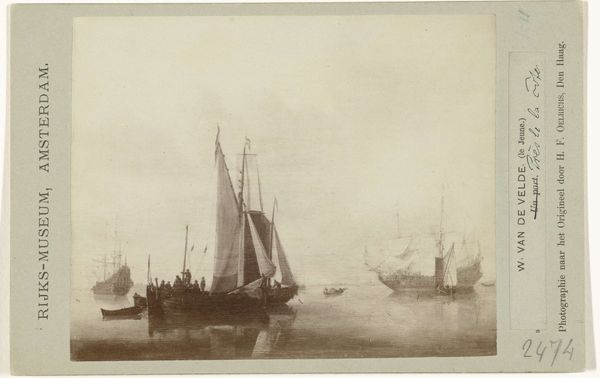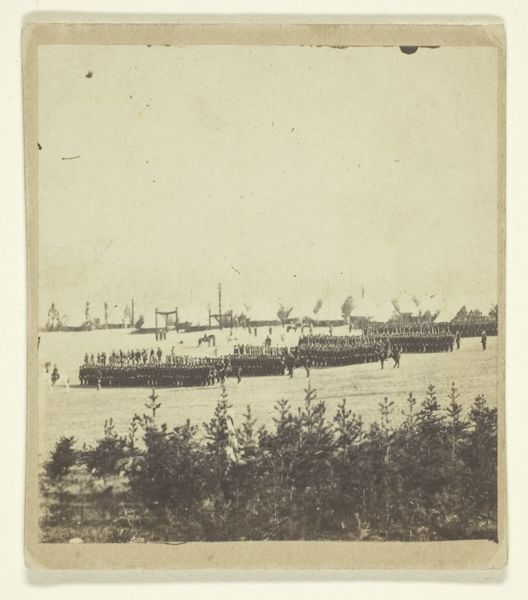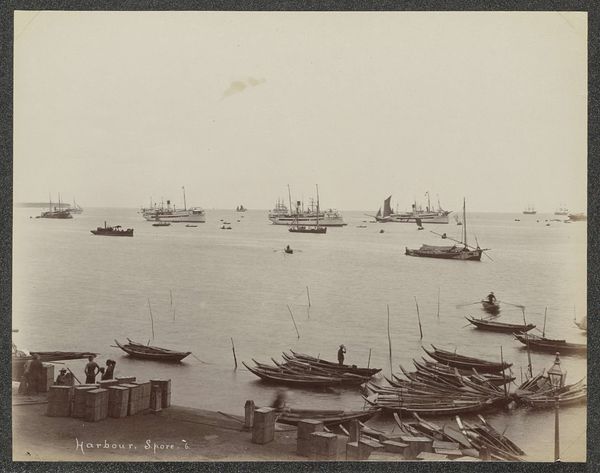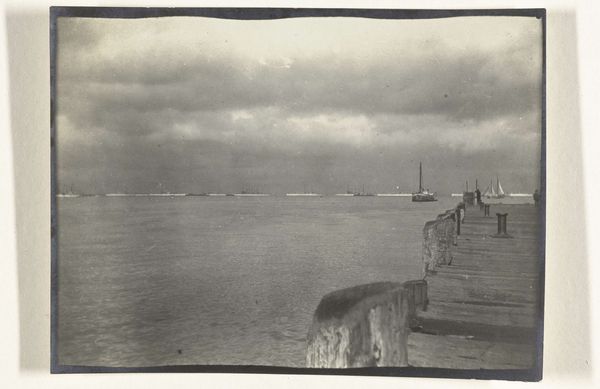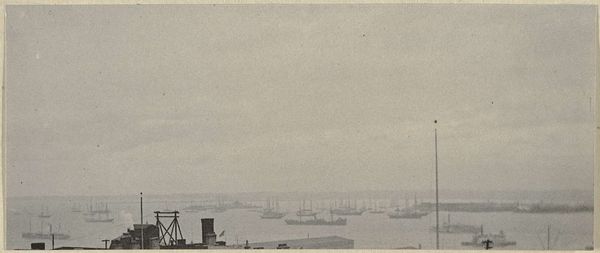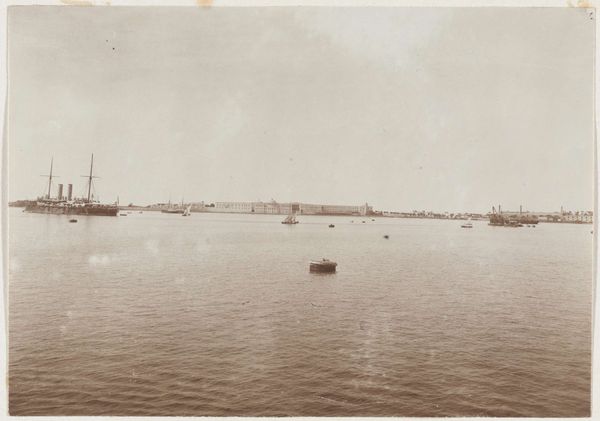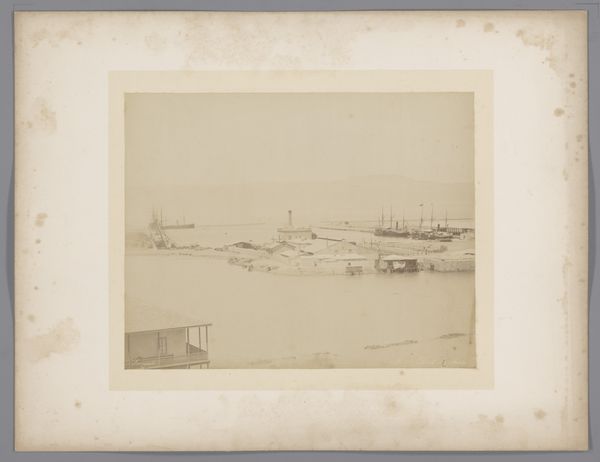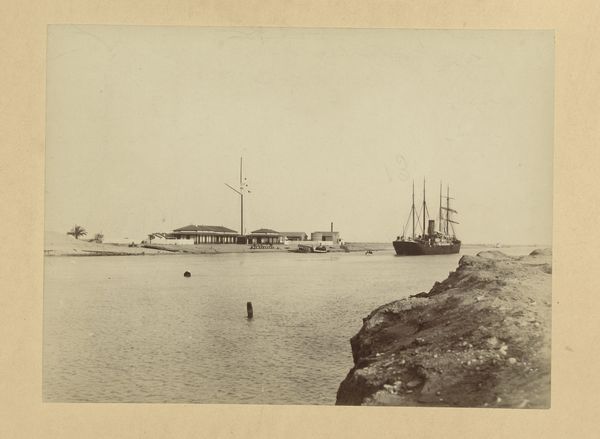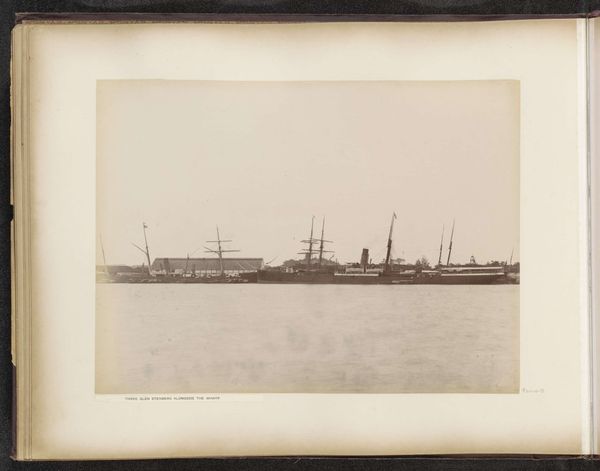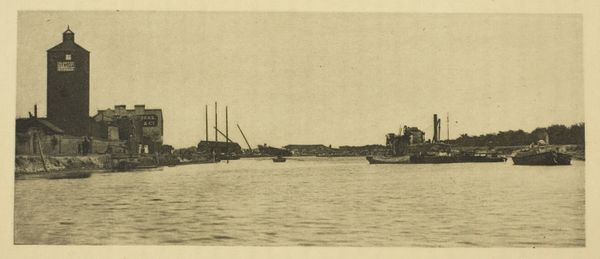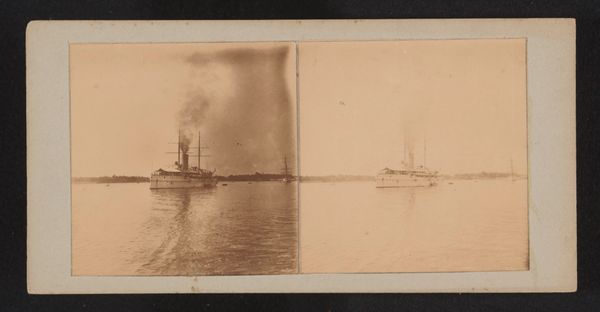
print, photography, gelatin-silver-print
#
still-life-photography
#
ship
# print
#
landscape
#
photography
#
gelatin-silver-print
#
hudson-river-school
#
watercolor
Dimensions: Image: 7 in. × 9 5/8 in. (17.8 × 24.4 cm)
Copyright: Public Domain
Editor: This is Alexander Gardner’s "Naval Blockade," a gelatin-silver print from 1865. The arrangement of ships fading into the horizon really emphasizes the vastness of the sea and the scale of the blockade itself. What catches your eye when you look at this? Curator: The starkness of the image really draws me in. Think about the chemistry involved, the processing of light on silver halides, to produce such a muted but detailed image. Gardner's choice of the gelatin-silver process is interesting, placing emphasis on the replicability of this scene for mass consumption. These prints, as commodities, played a huge role in shaping public perception of the Civil War. Do you see how the composition enhances this? Editor: Yes, now that you mention the production, it definitely highlights how photography could distribute and almost commodify images of war to the broader public, but replicability wasn't unique to photography at the time. Curator: Absolutely, but consider the speed and "accuracy" that photography provided compared to other reproductive media such as engravings. Gardner used photography's perceived objectivity to create seemingly unmediated access to the conflict. This challenges the tradition of history painting, doesn’t it? Where are the heroic narratives or allegorical figures? Editor: It really makes you think about how the technology influenced how war was understood. It's not some glorious painting; it is an attempt at realistic documentation distributed at scale. I suppose before this conversation I thought only about the imagery and message itself. Now the means of creating the message really makes me wonder who the work was created and sold for, too. Curator: Exactly! We often forget that art doesn't exist in a vacuum, right? Editor: Right! Thanks; that helps to put this piece into perspective.
Comments
No comments
Be the first to comment and join the conversation on the ultimate creative platform.
